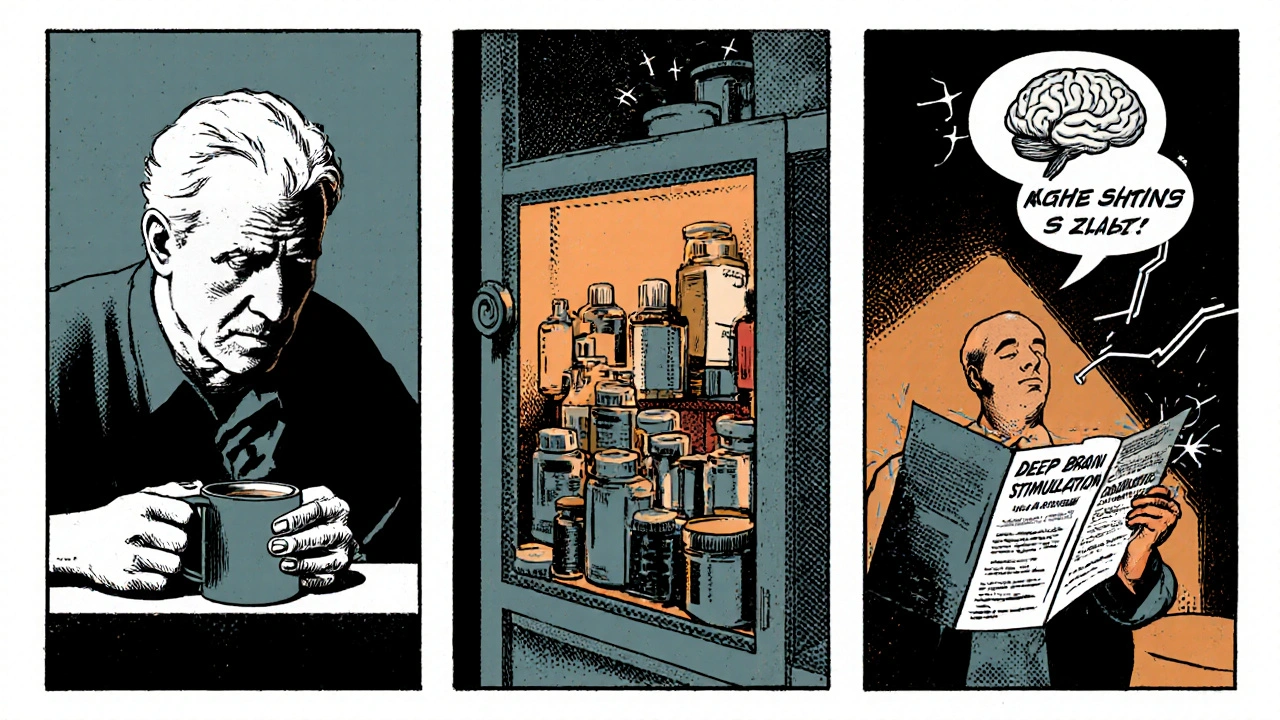Parkinson treatment
When dealing with Parkinson treatment, the set of medical and therapeutic approaches used to slow symptoms of Parkinson's disease and improve quality of life. Also known as PD therapy, it targets the loss of dopamine‑producing cells in the brain. Levodopa, the most common dopamine precursor medication for Parkinson's disease is often the first line of action. Levodopa works by crossing the blood‑brain barrier and converting into dopamine, which helps restore motor control. This medication is usually paired with a decarboxylase inhibitor to reduce side effects and improve absorption. Together, they form a core part of any Parkinson treatment plan, especially for patients newly diagnosed or experiencing fluctuating symptoms.
Beyond medication: devices and movement therapies
When medication alone isn’t enough, clinicians turn to deep brain stimulation, a surgical technique that implants electrodes in specific brain regions to modulate abnormal electrical activity. This device‑based therapy requires precise targeting of the subthalamic nucleus or globus pallidus, and it enables patients to lower their drug doses while maintaining motor function. Another non‑invasive avenue is physiotherapy, structured exercise programs that focus on balance, strength, and gait training for Parkinson's patients. Regular sessions improve stride length and reduce fall risk, proving that movement training complements pharmacologic care. Together, these options illustrate how Parkinson treatment encompasses both medication and technology‑driven strategies to address the disease’s complex symptoms.
In addition to levodopa and surgical options, MAO‑B inhibitors, drugs that block the monoamine oxidase‑B enzyme and thus increase brain dopamine levels offer a safer way to extend the effect of existing dopamine. Agents like selegiline and rasagiline reduce the breakdown of dopamine, helping to smooth out motor fluctuations without the high dose requirements of levodopa. When combined with physiotherapy and, when needed, deep brain stimulation, MAO‑B inhibitors round out a comprehensive Parkinson treatment toolkit. Below you’ll find articles that dig deeper into each of these options, share dosing tips, compare benefits, and show how real‑world patients blend them for the best outcomes.

Deep Brain Stimulation for Parkinson’s Disease: What You Need to Know
Explore how Deep Brain Stimulation works, who qualifies, the surgical steps, benefits, risks, and how it compares to medication for Parkinson's disease.
Read More